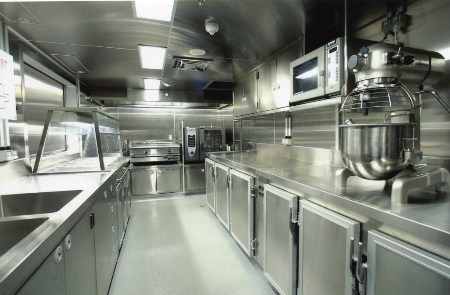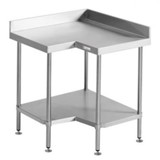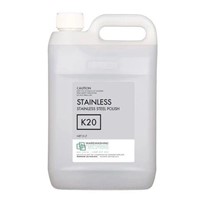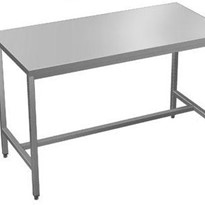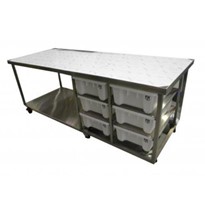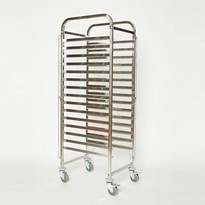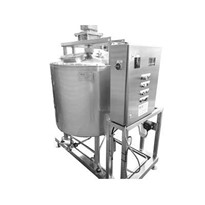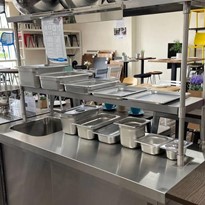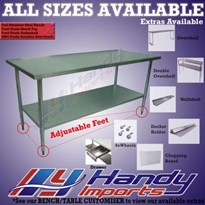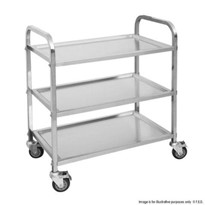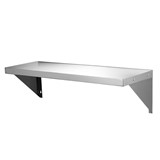Stainless steel is the perfect material for commercial kitchens or hospital environments because of it's ability to withstand extremes in temperature which can range from as low as Liquid Nitrogen to temperatures well above boiling point. Stainless steel surfaces should be wiped over with a soft cloth that has been soaked in warm soapy water. Always follow this by wiping over the surface with a cloth dampened with clean water.
Finally dry the surface with a fresh clean soft cloth.
Following the grain will lesson the chances of scratching or smudging the surface and using the dry cloth will rid the surface of any streaky wash marks.
Rubbing or scrubbing against the grain can damage the surface and create scratches which can attract dirt and grime and this in turn can cause corrosion spots to appear. Always avoid using steel wool, course fabrics and abrasive cleaning products as they will scratch and permanently damage the metal surface.
Stainless steel
Stainless steel is the general name for a number of different steels used primarily because of their corrosion resistance. All stainless steels share a minimum percentage of 10.5 per cent chromium. It is this element that reacts with the oxygen in the air to form a complex chrome-oxide surface layer that is invisible but strong enough to prevent further oxygen from "staining" (rusting) the surface. We use different grades of stainless steel in our manufacturing process.
The difference between 304 and 316 stainless steel is that 304 contains 18 per cent chromium and 8 per cent nickel where-as 316 contains 16 per cent chromium, 10 per cent nickel and 2 per cent molybdenum. The "moly" is added to help resist corrosion to chlorides (like sea water and de-icing salts.
Substances that can harm stainless steel
Certain foods, when left for prolonged periods, can cause pitting and corrosion. Examples are citric fruit juices, salt, vinegar, mustard, pickles, and mayonnaise (even used teabags can leave hard to remove stains). Bleaches containing hypochlorite will attack stainless steel and cause pitting and staining and acids can harm stainless steel (e.g photographic developer and denture cleansers).
If any of these substances come into contact with your stainless steel you should wash them away immediately with clean warm water.
Rust stains
Wet the surface with an oxalic based cleaner or if very stubborn a 10 per cent nitric acid. These must be used very carefully and always follow the manufacturer's instructions. It is very important to neutralise the acid so then rinse with a diluted sodium bicarbonate solution ( baking powder ), rinse with clean cold water and wipe dry. This treatment may need to be repeated, depending on the severity of the rust staining.
More stubborn stains
Wash with a mild cream cleaning agent, rubbing in the direction of the visible surface structure, rinse with clean cold water, and wipe dry.
Polishing stainless steel surfaces
3M Do have a stainless steel polish in a can and we recommend 3M High Performance Cleaning cloth [You can order this from Lazco] Another option available from Lazco for wiping a stainless steel surface is Shellite - this will leave the surface clean, dry and streak free but will not remove some stubborn grime and stains.
Always rinse well with clean water all food preparation surfaces.
Stainless steel can be polished back to it's original finish with the correct polishing materials, however this is a process that takes some time and experience to end up with the desired finish and can not be done to only patches of a surface because it will show up and look undesirable. If a stainless steel surface needs to be re-polished it is recommended that professional help be sort to be shown the process or have the process carried out.


